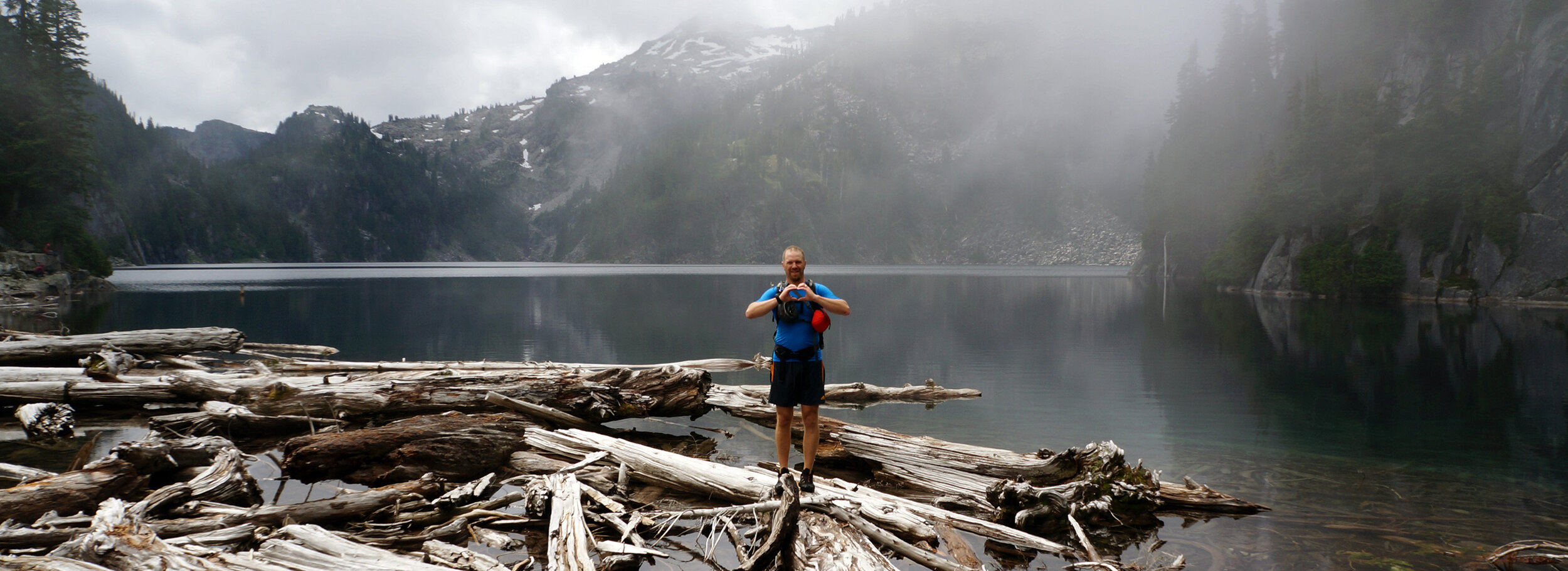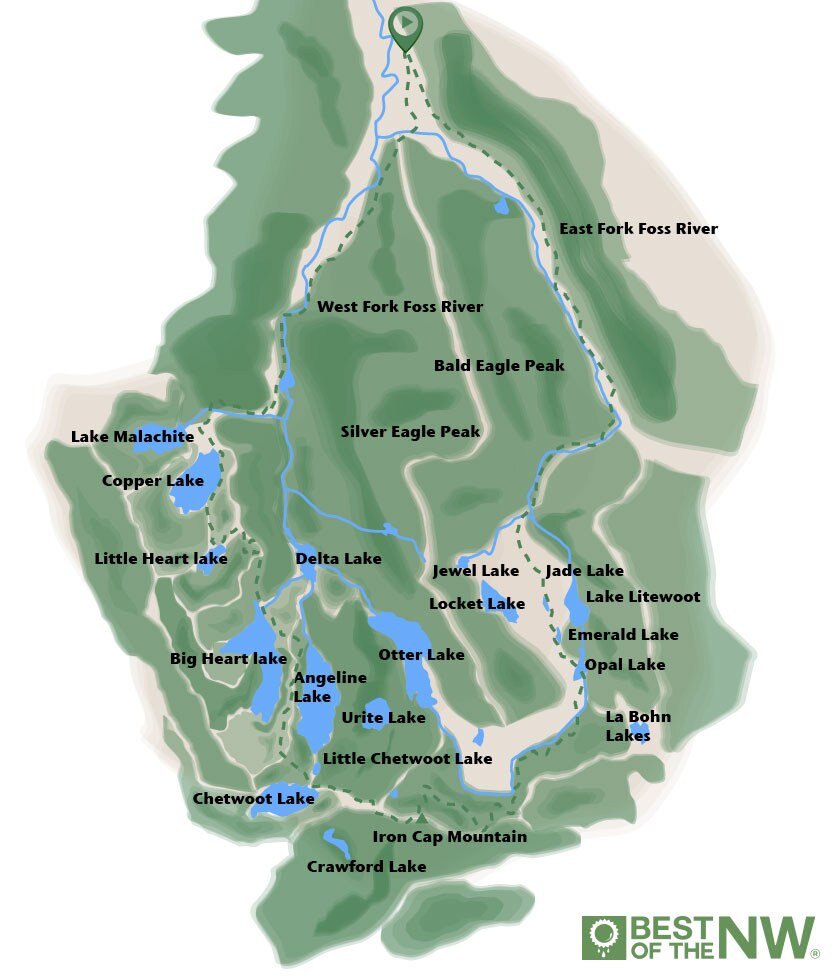Necklace Valley
The Foss River “Full” Necklace Loop. Alpine Lakes Wilderness.
GPS Data:
Video Recap Short Version:
Summary: • 2 River Drainages • 1 Mountain Traverse • 17 Lakes • 16.5 Hours • 27.5 Miles • 12,900 Feet Cumulative Gain • 1,000,000,000 Mosquitoes • 1 Epic Awesome Hike
Well-traveled trails on the West Fork of the Foss River to Big Heart Lake and the East fork of the Foss River to Opal Lake can be connected via the High Alpine Route over or around Iron Cap Mountain. Start from the Necklace Valley Trailhead heading towards the West fork of the Foss River Trailhead to Trout Lake. Climb up the valley past old growth trees and dramatic waterfalls to Copper Lake.
Wrap around Copper Lake to Little Heart Lake before winding and climbing up then back down to Big Heart Lake. The trail continues on the East Ridge between Big Heart and Angeline Lake climbing and dropping to a scenic series of platforms that connect in-between Little Chetwoot and Chetwoot Lake.
Ascend talus fields to the southern ridge of Iron Cap Mountain. Navigate the steep ridge on granite blocks until able to cross the face of the peak to the high northern ridge. Follow down and north to a lesser grade bushwhack then cut back on ledges avoiding cliffs along the flanks of the peak.
A series of rises connects to the Tank Lakes where the trail and Cairns assist in route finding. Follow the high ridge down to forested Opal Lake to connect to the Necklace Valley for a series of lakes before a long gradual decent down and along the East fork of the Foss River back to the Necklace Valley Trailhead.
Lake 1. Trout Lake Lake 2. Copper Lake Lake 3. Little Heart Lake Lake 4. Big Heart Lake Lake 5. Delta Lake Lake 6. Angeline Lake Lake 7. Little Chetwoot Lake Lake 8. Chetwoot Lake Lake 9. Azure Lake Lake 10. Urite Lake Lake 11. Crawford Lake Lake 12. Otter Lake Lake 13. Bonnie Lake Lake 14. Tank Lake Lake 15. Opal Lake Lake 16. Emerald Lake Lake 17. Jade Lake






